Egyptian Obelisks in Rome
How many are there and why are they here? + most importantly, where to to find them
Rome is such a historical jumble. The street I live on dates back thousands of years. At the end of it, there is a tower from the 16th century that sits on top of the remains of the Foro della Pace from 858. Walk a little further and there is the Vittoriano, the massive white monument that was built in 1885. There are Renaissance palaces and Baroque churches, Fascist/rationalist palazzos, and the occasional mid-century condominium. In step with the more is more mix are the 13 obelisks that are scattered all over town. Some are plopped on top of baroque fountains and sculptures and some are hidden away in parks and obscure piazzas. None of them are where they were originally placed. They were buried or broken or lost over the centuries and found again in the Renaissance. There are eight obelisks that come from ancient Egypt and five from ancient Rome. Hunting for the obelisks and other Egyptian treasures makes for a fun scavenger hunt.
Rome has more obelisks than any other country in the world, including Egypt!
Why are there ancient Egyptian obelisks in Rome? The simple answer is that it was fashionable. The other aim was to show off the reach and power of the empire. And its rulers. The emperor Augustus was the first to bring the enormous monuments to Rome after his victory over Anthony and Cleopatra. There were religious regions too. Rome had temples to Isis and sun cults. Another Roman jumble.
The Egyptian Obelisks
The Lateran Obelisk next to the Basilica di San Giovanni in Laterano is the largest standing ancient Egyptian obelisk in the world. It was made around 1400 BC and brought to Rome by the emperor Constantine. He had it installed in the Circo Massimo. Pope Sixtus V had it moved in the late 1500’s and a cross put on top.
The Vatican Obelisk was built in Alexandria in 30-ish BC under the orders of the Emperor Augustus and brought to Rome by Caligula ten year later. A thousand + years later that same Pope Sixtus V wanted to expand Piazza San Pietro. Domenica Fontana, an Italian engineer came up with a plan that involved scaffolding and winches and horses and hundreds of men to move the 25 meters of marble the approximately 259 meters. It took almost a year.
The Flaminio and Solare Obelisks were brought by Augustus from Heliopolis (now known as Cairo) in 10BC. The Flaminio obelisk was in Circo Massimo with the Lateran one. Pope Sixtus found it in pieces and had it moved to Piazza del Popolo. The lion fountain was added in the 1800s. The Solare Obelisk was part of the sundial that Augustus had erected in the Campo Marzio. Pope Pius VI found it buried underneath what is now the Palazzo Montecitorio home of the lower house of the Italian Parliament.
The Macuteo and Matteiano Obelisks were originally a pair of the same size that came from the Temple of Ra in Heliopolis. The Macuteo Obelisk was in a temple to Isis. It was found again in 1373 and was moved to its current home in front of the Pantheon by Pope Clement XI in 1711. The Matteiano Obelisk started in the same temple to Isis near Piazza della Minerva with its twin. Lost and found over the centuries it has been on the Capitoline hill and finally where you can see it now in the Villa Celimontana.
The Minerveo obelisk is on top of the beloved Bernini elephant in Piazza della Minerva. Brought to Rome by Diocletian for a temple to Isis. It was found in 1655 and put on the statue in 1667 by Pope Alexander VII. The obelisk’s original twin from Sais is now in Urbino.
The Dogali Obelisk was part of a pair that came from Heliopolis (the other one in the Boboli gardens in Florence.) for that temple to Isis in Piazza della Minerva. It was in front of what is Termini train station and since 1924 it is in a scruffy park in-between Termini and Piazza Repubblica. Its modern commemoration is for the Battle of Dogali, fought on 26 January 1887 between Italy and Ethiopia.
The Roman Obelisks
There are 5 obelisks that are still ancient but of the Roman variety. Some of them were created in Egypt, when it was part of the Roman empire and some were made in Rome
The Agonalis obelisk was commissioned by Domitian and began at the Roman temple of Serapis on the Quirinale hill. Then Maxentius had it moved the Circo Massimo. Eventually Bernini placed it on top of his Fontana dei Quattro Fiumi in Piazza Navona in 1651.
The Quirinale and Esquilino obelisks were originally a pair that were commissioned to decorate the Mausoleum of Augustus (which is still closed.) They were separated in 1527 when Pope Sixtus V had the one we call Esquilino put behind Santa Maria Maggiore. A few hundred years later Pope Pius VI had the second one put on the Quirinale hill.
The Sallustiano Obelisk that you can see at the top of the Spanish steps was commissioned by Aurelia for the pleasure garden in what is now the Sallustiano neighborhood.
The Pinciano Obelisk has had quite a journey during its long existence. Starting in Tivoli where it was commissioned by Hadrian for the tomb of his beloved Antinous. It has stood in a circus near Port Maggiore and in the garden behind the Palazzo Barberini
Modern Obelisks
The Obelisk of Axum used to be in front of UN The Food and Agriculture headquarters. It was returned to its home in the Tigray Region of Ethiopia.
The Mussolini Obelisk stands in front of the Foro Italico.
There are two modern obelisks in Rome that I love. The Marconi Obelisk in EUR is dedicated to Guglielmo Marconi and decorated with modern hieroglyphics. It was built in 1959 for the 1960 Summer Olympics. And Arnaldo Pomodoro’s Novecento Obelisk in front of the Palazzo dello Sport.
Want some more Egypt in Rome content?
You can sit in the company of some sweet cats and Keats and Shelly with a view of Rome’s Pyramid of Cestius from 12BC in the Non-Catholic cemetery.
The Vatican Museums have an Egyptian collection.
There is an Egyptian sculpture at the Palazzo Altemps from 9BC that literally takes my breath away each time I come around the corner and see it, just sitting there in a corner
One of my favorite Rome secrets is the stele dedicated to the god Amon hidden in a corner of the garden behind the Galleria Borghese.
The Museo di Scultura Antica Giovanni Barracco has a small Egyptian collection.
The Egyptian Academy has a reproduction of the famous Tutankhamon IX’s tomb.
It wasn’t just the Romans that were obsessed with obelisks. Did you know there is an Egyptian obelisk in New York? My pal Keith can tell you all about it.
If all of this talk of obelisks and pharos and pyramids made you hungry for hummus and tabouli and falafel I have two suggestions (they are not Egyptian but close enough?) Yalla Yalla is a Lebanese place on via Cavour and the Syrian run Hummustown can deliver or they have a kiosk in Piazza Repubblica.




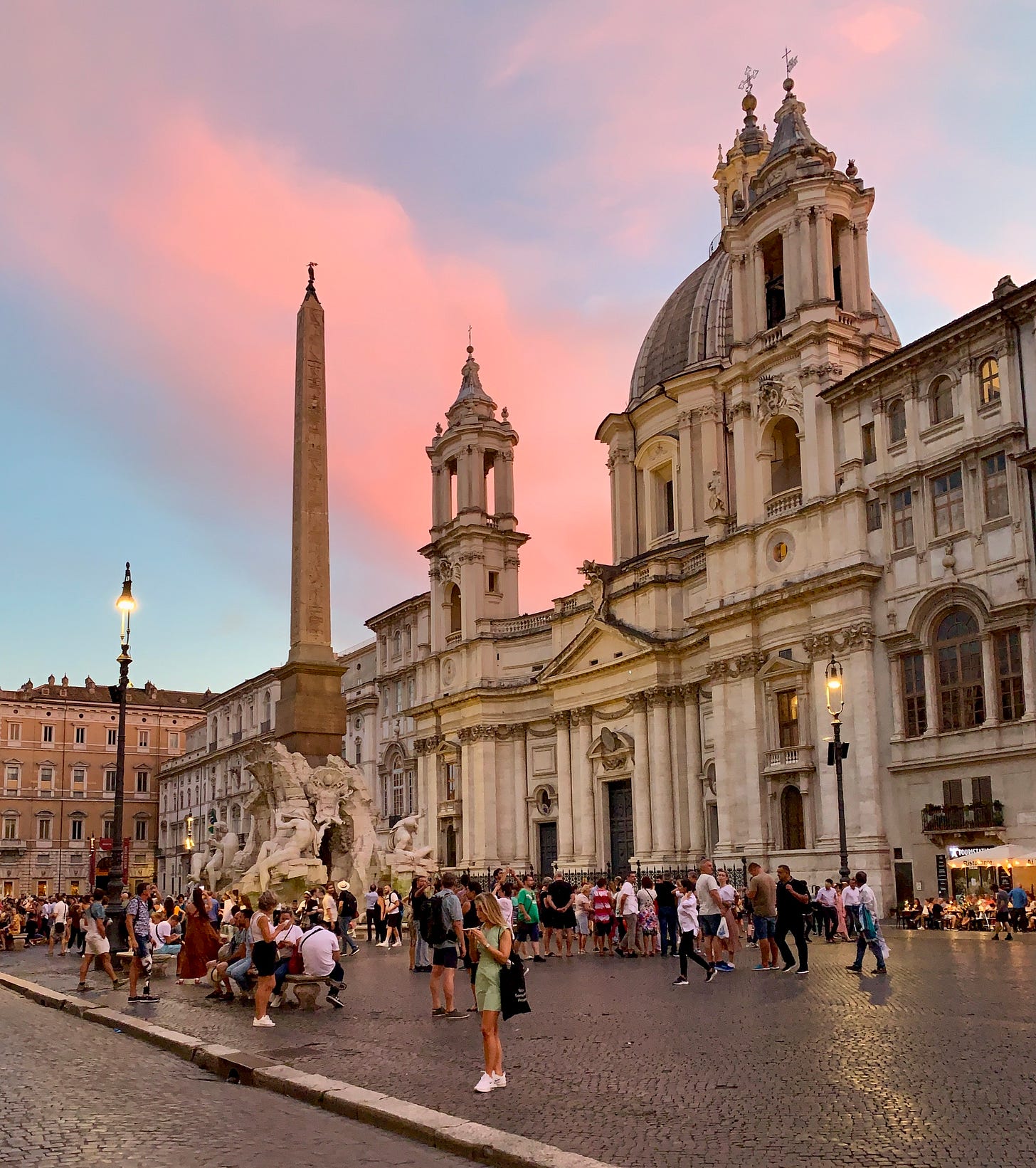
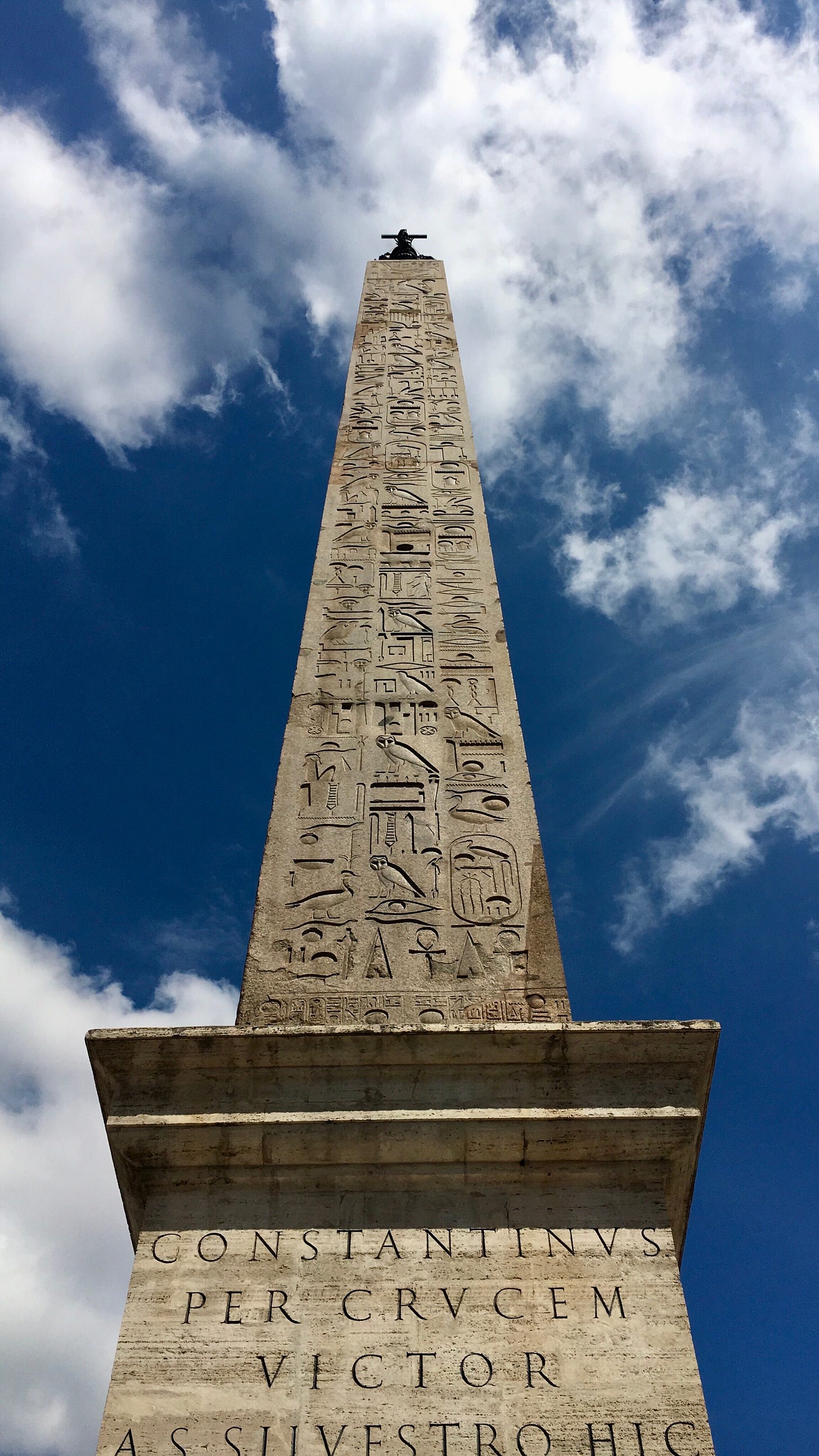
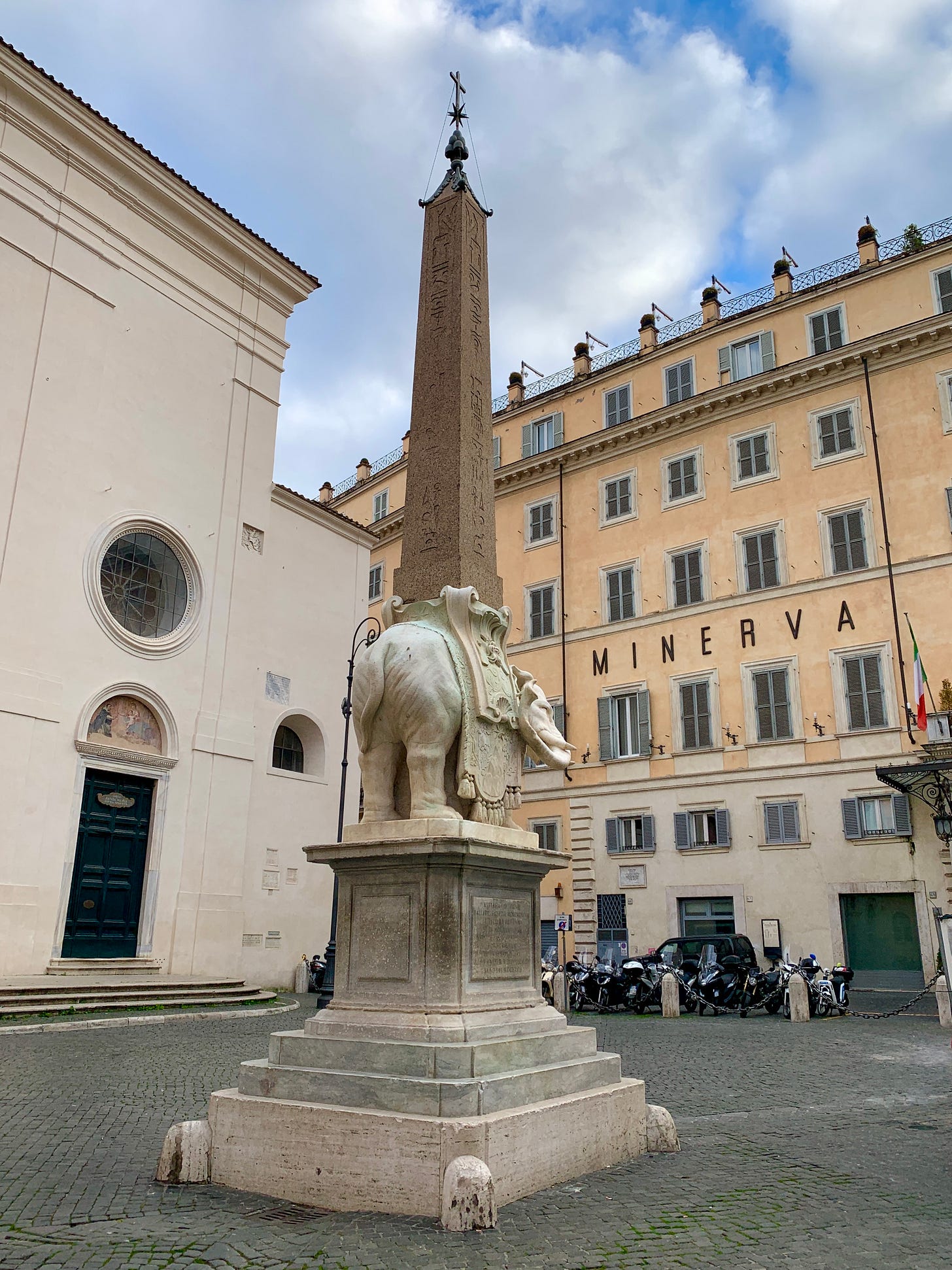
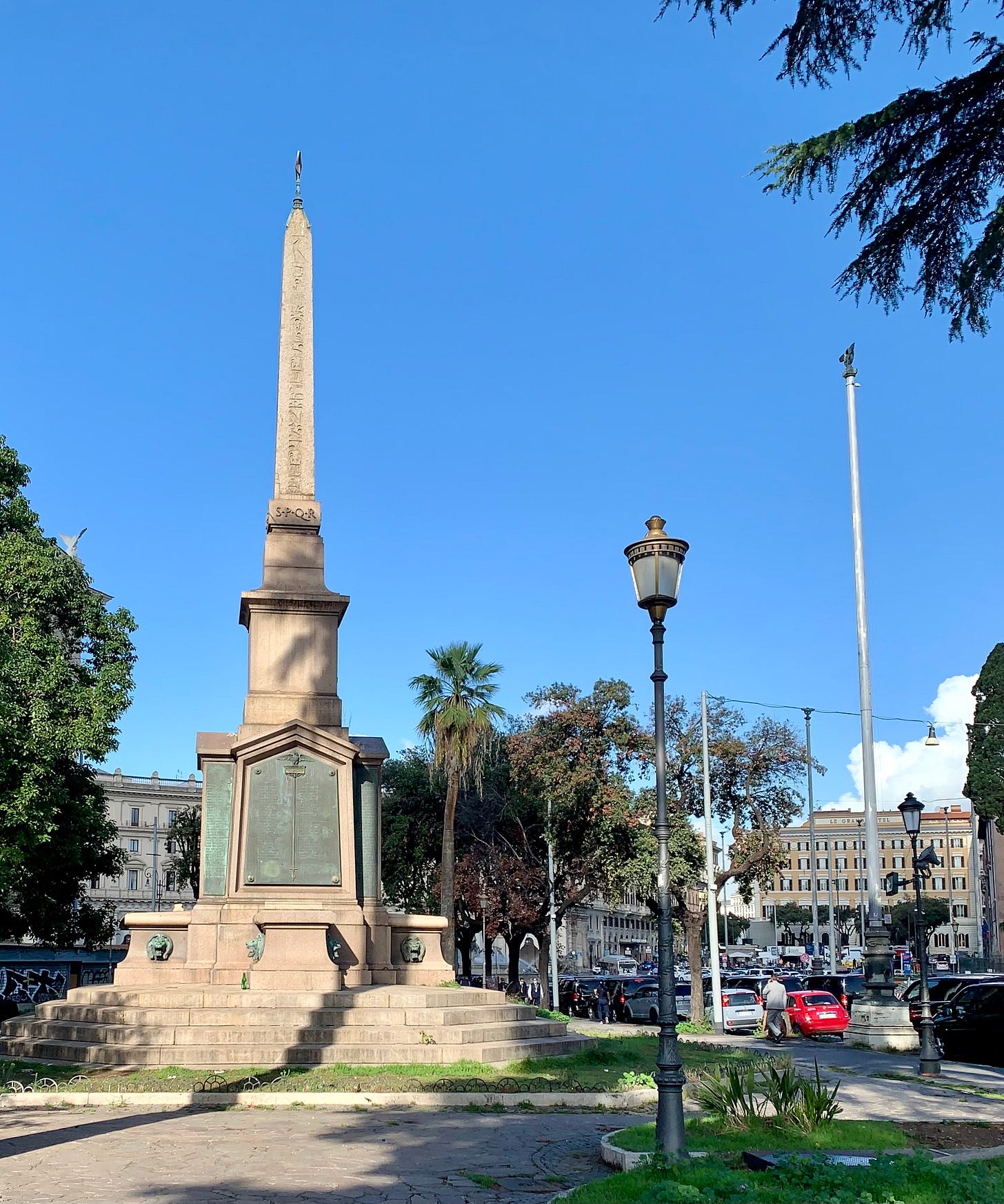
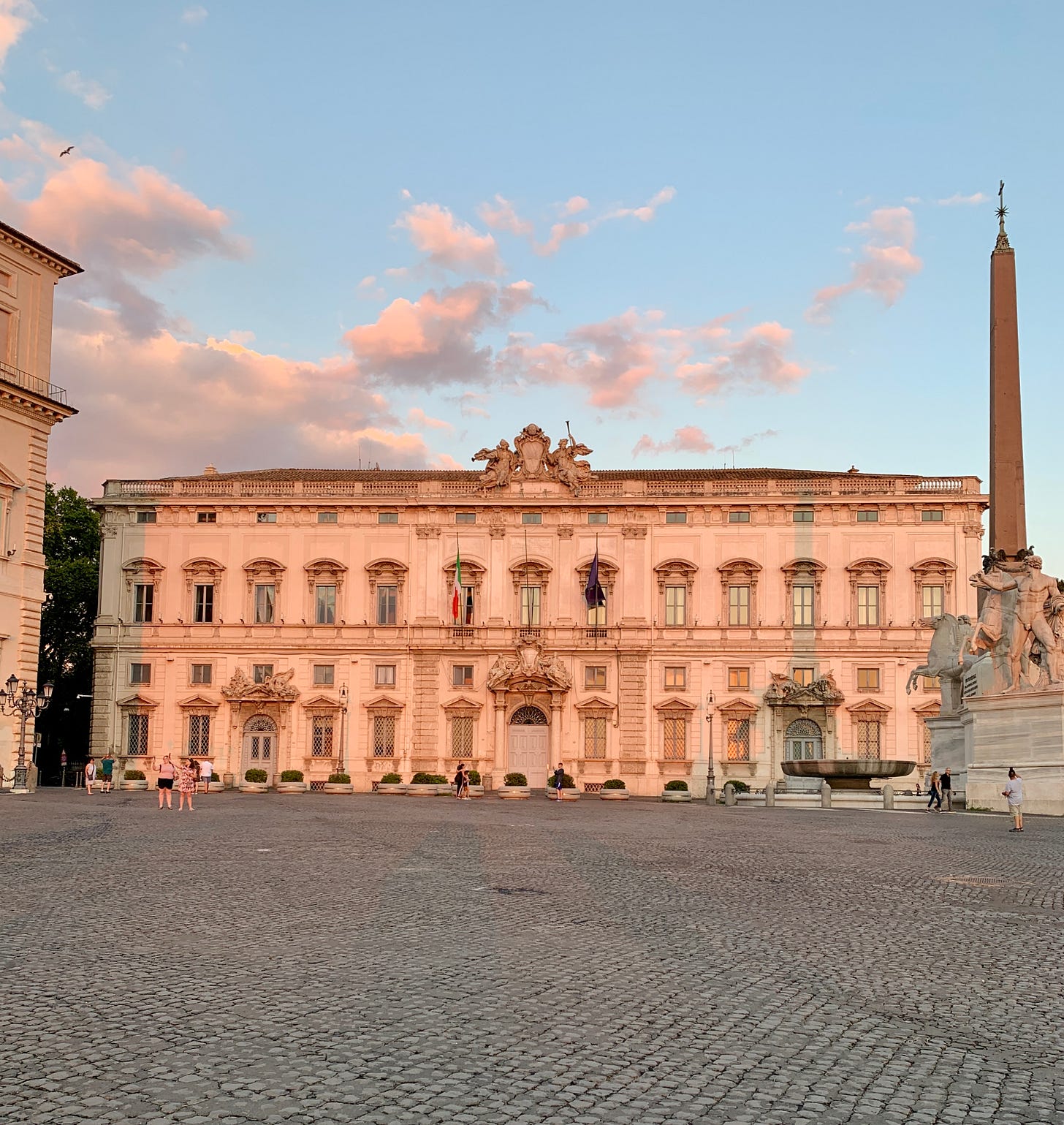
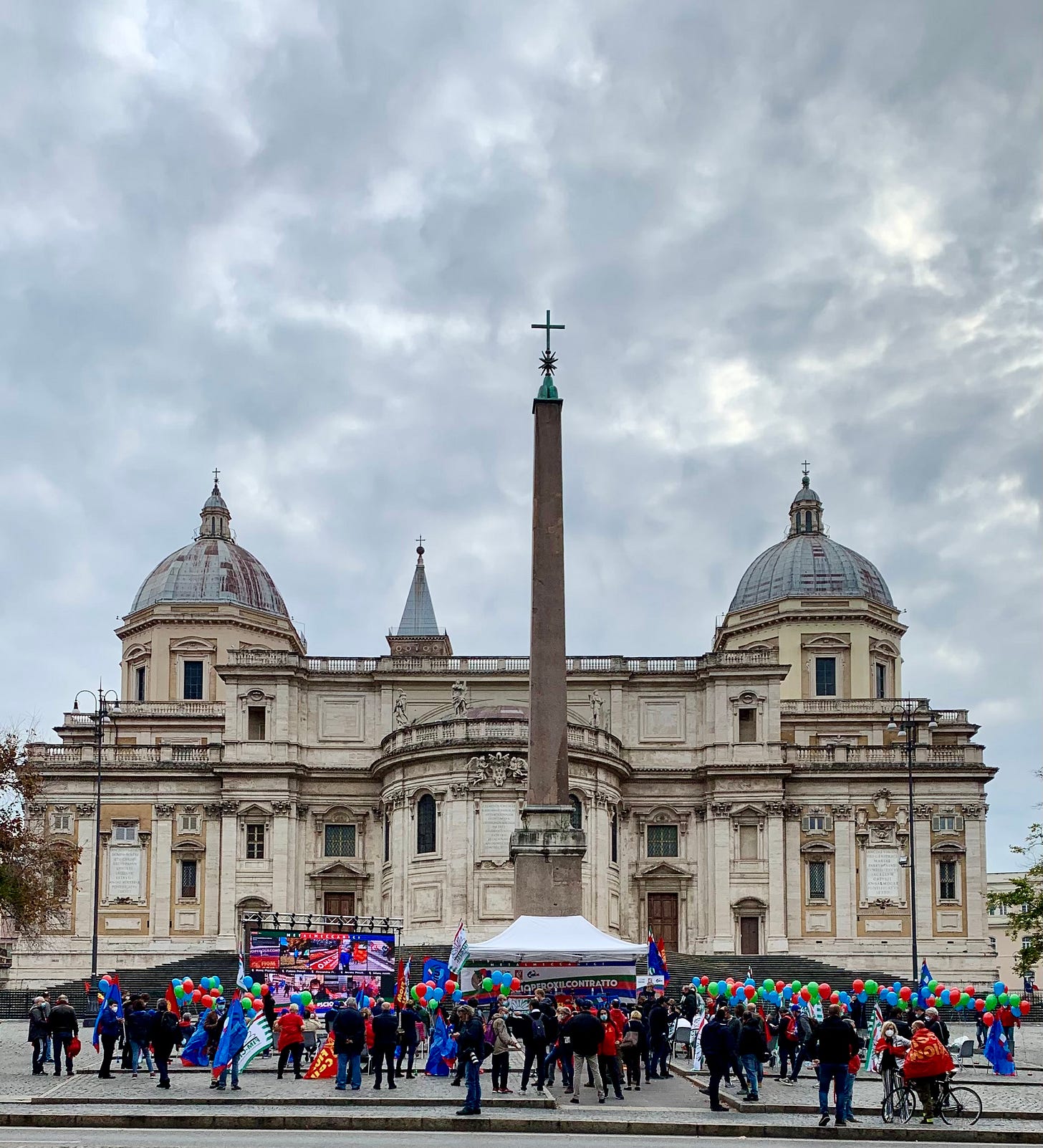
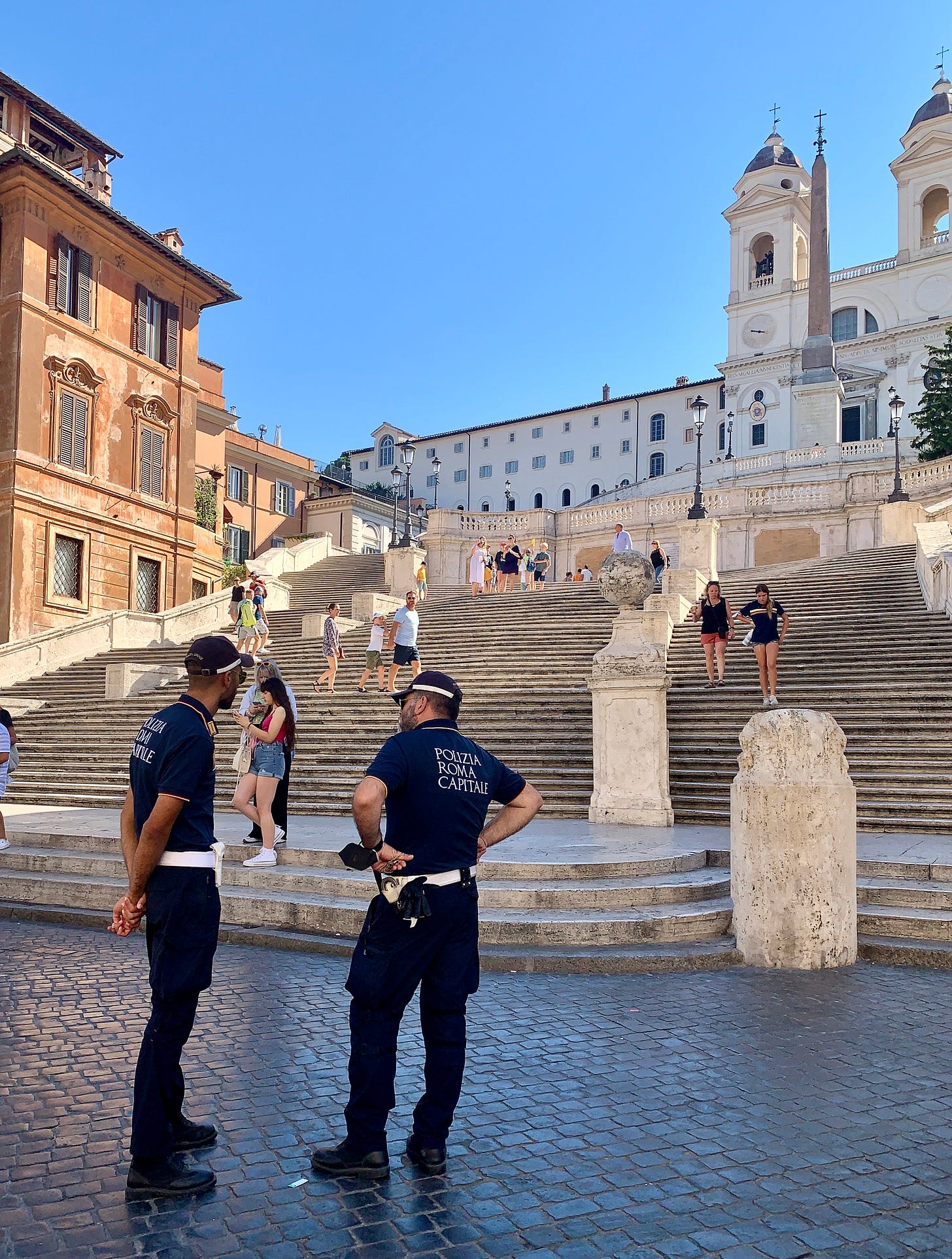
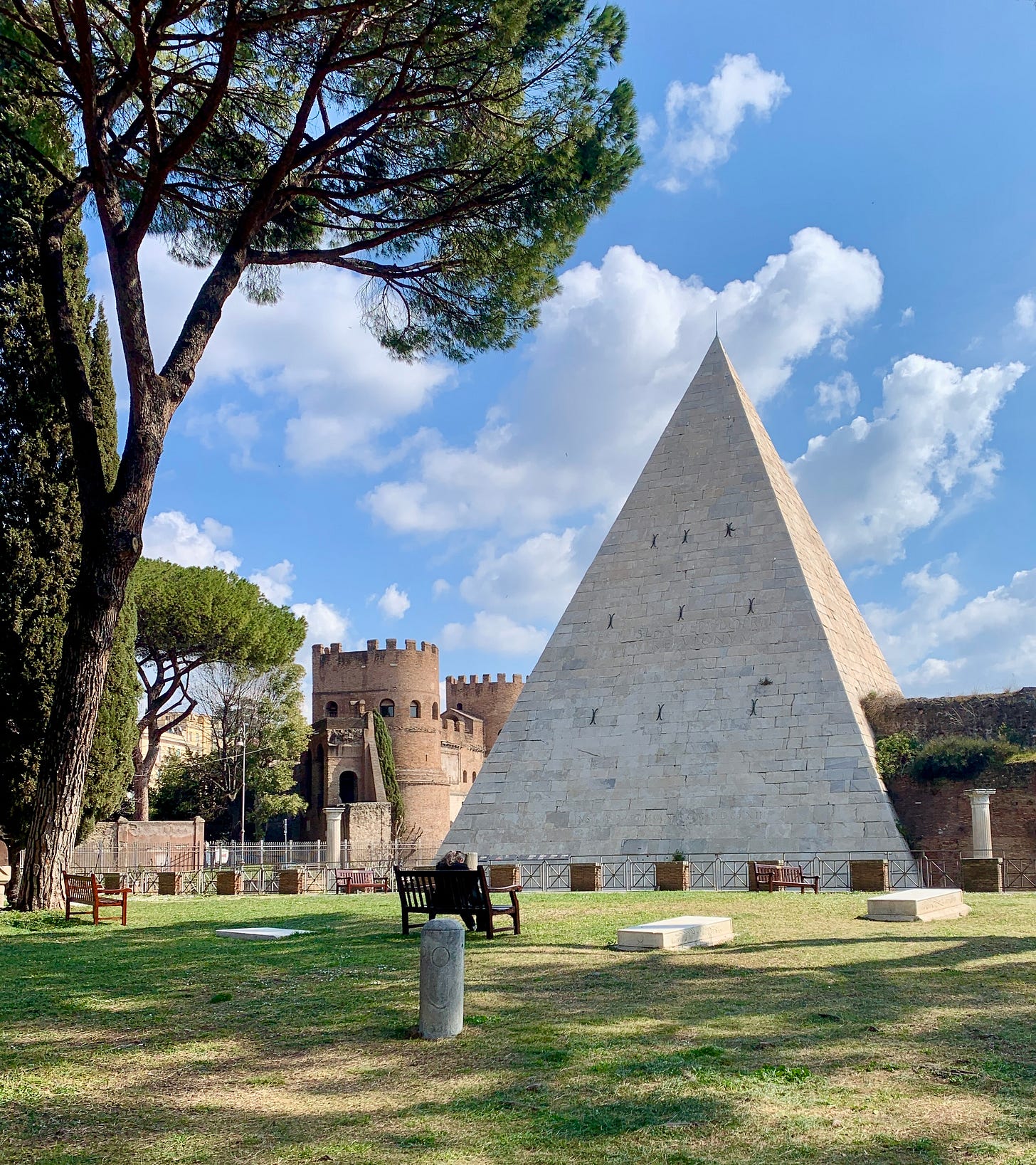
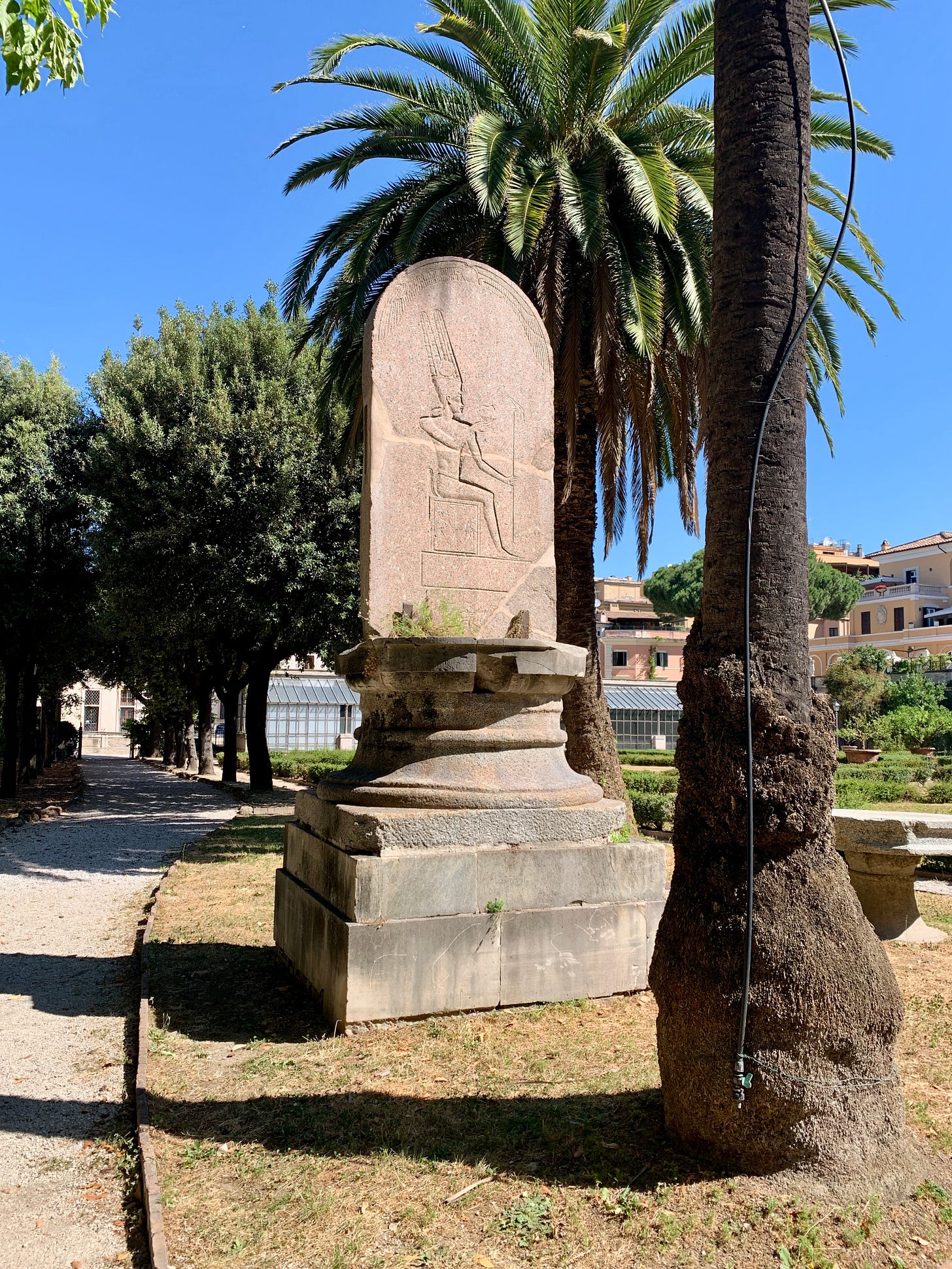
Great article!
I still marvel at being able to go obelisk hopping any ol' day here. I don't think I'll ever get used to it! Loved this list!